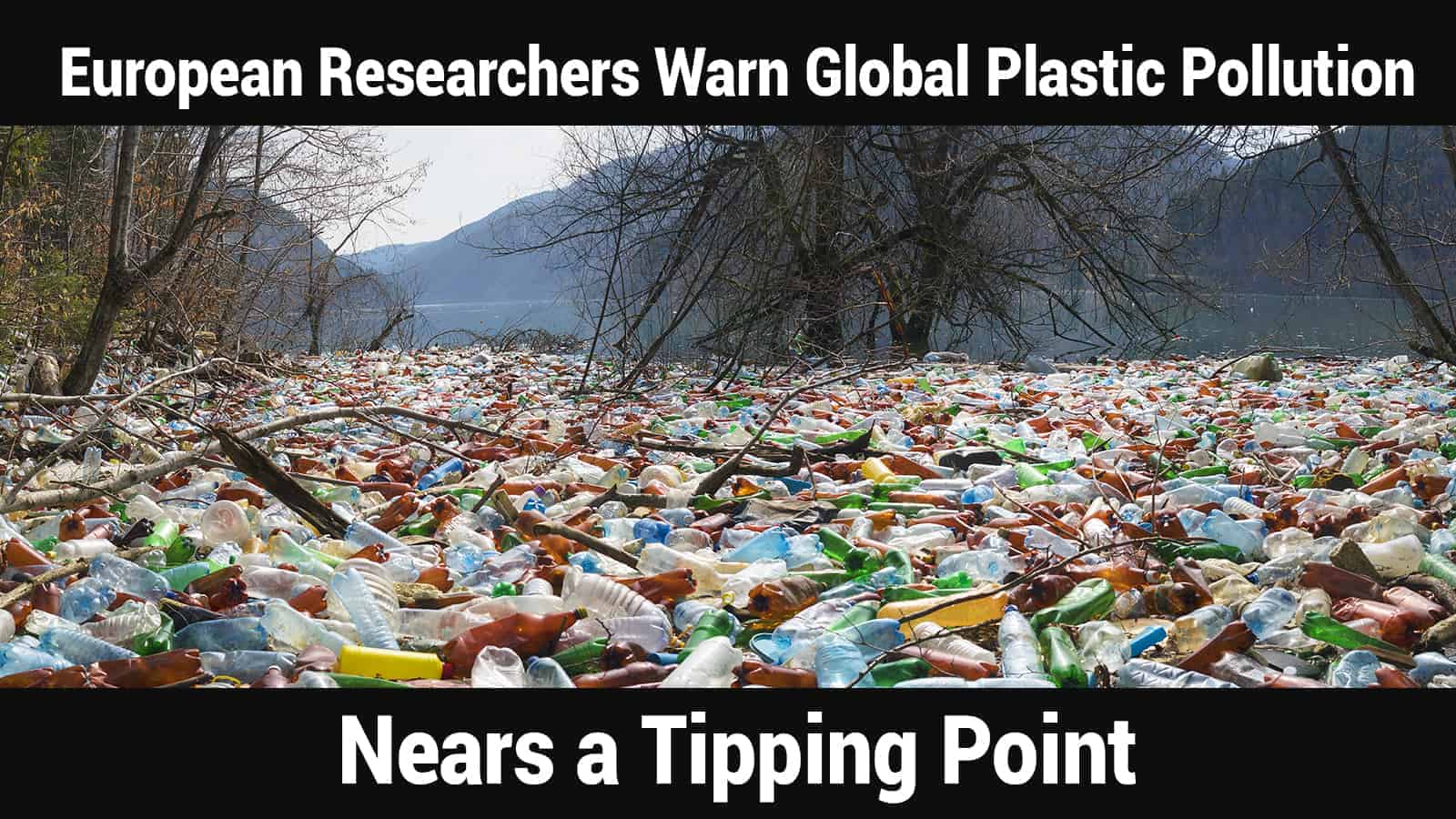A new study reveals that the plastic pollution crisis may be reaching a global tipping point. In the study, researchers show that if plastic emissions continue unabated, it may trigger irreversible effects. To avoid catastrophe, it requires sweeping reforms from global governments and lawmakers.
Sadly, even the most pristine environments have become inundated with plastic. You can now find it on every corner of the planet, even in Antarctic sea ice! No habitat or ecosystem remains without plastic in our modern world. Scientists have studied the adverse effects of plastic for years and continue to warn humanity of its consequences. Unfortunately, most of their concerns fall on deaf ears.
In 2016, global plastic emissions in the world’s lakes, rivers, and oceans ranged from 9 to 23 million metric tons per year. Scientists believe that similar amounts are emitted on land annually. By 2025, researchers estimate that plastic pollution will nearly double if we don’t curb our appetite for plastic.
The authors call plastic pollution a “global threat,” encouraging actions to reduce plastic emissions drastically. This would mean stopping or greatly reducing plastic consumption as well as providing viable eco-friendly alternatives. Researchers from Sweden, Norway, and Germany published the new study on July 2nd in Science.
“Plastic is deeply engrained in our society, and it leaks out into the environment everywhere, even in countries with good waste-handling infrastructure,” says Matthew MacLeod, Professor at Stockholm University and lead author of the study. He adds that emissions continue to rise despite increased public and scientific awareness about the dangers of plastic pollution.
Plastic is good for business but a death sentence for the environment.
 However, to his co-author Mine Tekman, a Ph.D. candidate at the Alfred Wegener Institute in Germany, this hardly comes as a surprise. She says that politics and economics play a huge role in the plastic pollution issue. The discrepancy makes sense because businesses require infinite growth, and virtually every business needs plastic to survive. Unfortunately, the environment pays a hefty price for our short-sightedness.
However, to his co-author Mine Tekman, a Ph.D. candidate at the Alfred Wegener Institute in Germany, this hardly comes as a surprise. She says that politics and economics play a huge role in the plastic pollution issue. The discrepancy makes sense because businesses require infinite growth, and virtually every business needs plastic to survive. Unfortunately, the environment pays a hefty price for our short-sightedness.
Tekman says that current solutions to plastic pollution like recycling and cleanup technologies barely make a dent. They’re only a bandaid to a genuine environmental threat that is at its tipping point. She added that to do damage control, we need to get at the source of the problem. As we said before, much of it lies in poor policymaking and, to put it bluntly, greed.
“The world promotes technological solutions for recycling and to remove plastic from the environment. As consumers, we believe that when we properly separate our plastic trash, all will magically be recycled. Technologically, plastic recycling has many limitations, and countries with good infrastructures have been exporting their plastic waste to countries with worse facilities. Reducing emissions requires drastic actions, like capping the production of virgin plastic to increase the value of recycled plastic, and banning the export of plastic waste unless it is to a country with better recycling,” says Tekman.
Our appetite for plastic affects even remote regions of the world
When people recycle, they feel like they’ve done something good for the environment. However, like Tekman said, most recycling ends up in third-world countries with poor recycling facilities. This means much of the recycled materials end up in landfills or the environment along with trash.
If cleanup efforts and natural ecological processes can’t remove all the pollution, the emissions accumulate in the environment. This occurs by a multi-step process called weathering.
“Weathering of plastic happens because of many different processes, and we have come a long way in understanding them. But weathering is constantly changing the properties of plastic pollution, which opens new doors to more questions,” says Hans Peter Arp, a researcher at the Norwegian Geotechnical Institute (NGI) and Professor at the Norwegian University of Science and Technology (NTNU) who has also co-authored the study. “Degradation is very slow and not effective in stopping accumulation, so exposure to weathered plastic will only increase,” says Arp.
Therefore, he calls plastic a “poorly reversible pollutant” due to its constant emissions and environmental presence. Unfortunately, remote environments often bear the brunt of the onslaught. Co-author Annika Jahnke, a researcher at the Helmholtz Centre for Environmental Research (UFZ) and Professor at the RWTH Aachen University, explains the following:
“In remote environments, plastic debris cannot be removed by cleanups, and weathering of large plastic items will inevitably result in the generation of large numbers of micro-and nano plastic particles as well as leaching of chemicals that were intentionally added to the plastic and other chemicals that break off the plastic polymer backbone. So, plastic in the environment is a constantly moving target of increasing complexity and mobility. Where it accumulates and what effects it may cause are challenging or maybe even impossible to predict.”
 Plastic pollution may soon reach a tipping point, causing irreversible destruction
Plastic pollution may soon reach a tipping point, causing irreversible destruction
Plastic pollution already causes immense environmental damage on its own by killing marine life and releasing toxins. However, it may also exacerbate other environmental stressors in remote regions of the world, possibly triggering tipping points. The new research lists a few hypothetical examples of these effects:
- worsening climate change due to disruption of the global carbon pump
- compounding effects of overfishing, leading to greater biodiversity loss
- ongoing habitat loss because of fluctuating water temperatures, nutrient supply, and chemical exposure
In conclusion, the authors say that plastic emissions may trigger global, irreversible tipping points in the environment. They hope that the study will provide “compelling motivation” for world leaders to work together to combat plastic pollution.
“Right now, we are loading up the environment with increasing amounts of poorly reversible plastic pollution. So far, we don’t see widespread evidence of bad consequences, but if weathering plastic triggers a really bad effect, we are not likely to be able to reverse it,” cautions MacLeod. “The cost of ignoring the accumulation of persistent plastic pollution in the environment could be enormous. The rational thing to do is to act as quickly as we can to reduce emissions of plastic to the environment.”


















